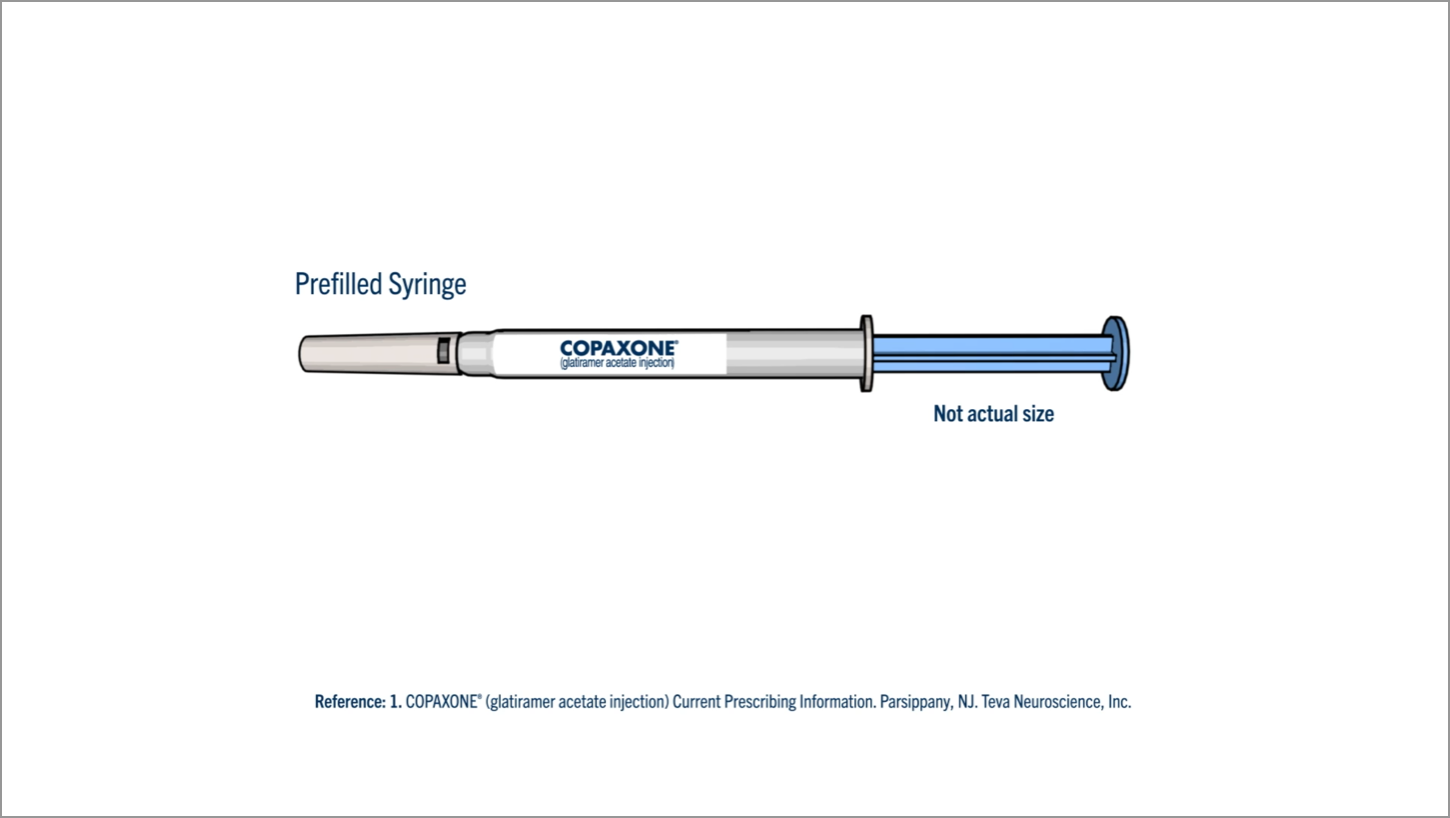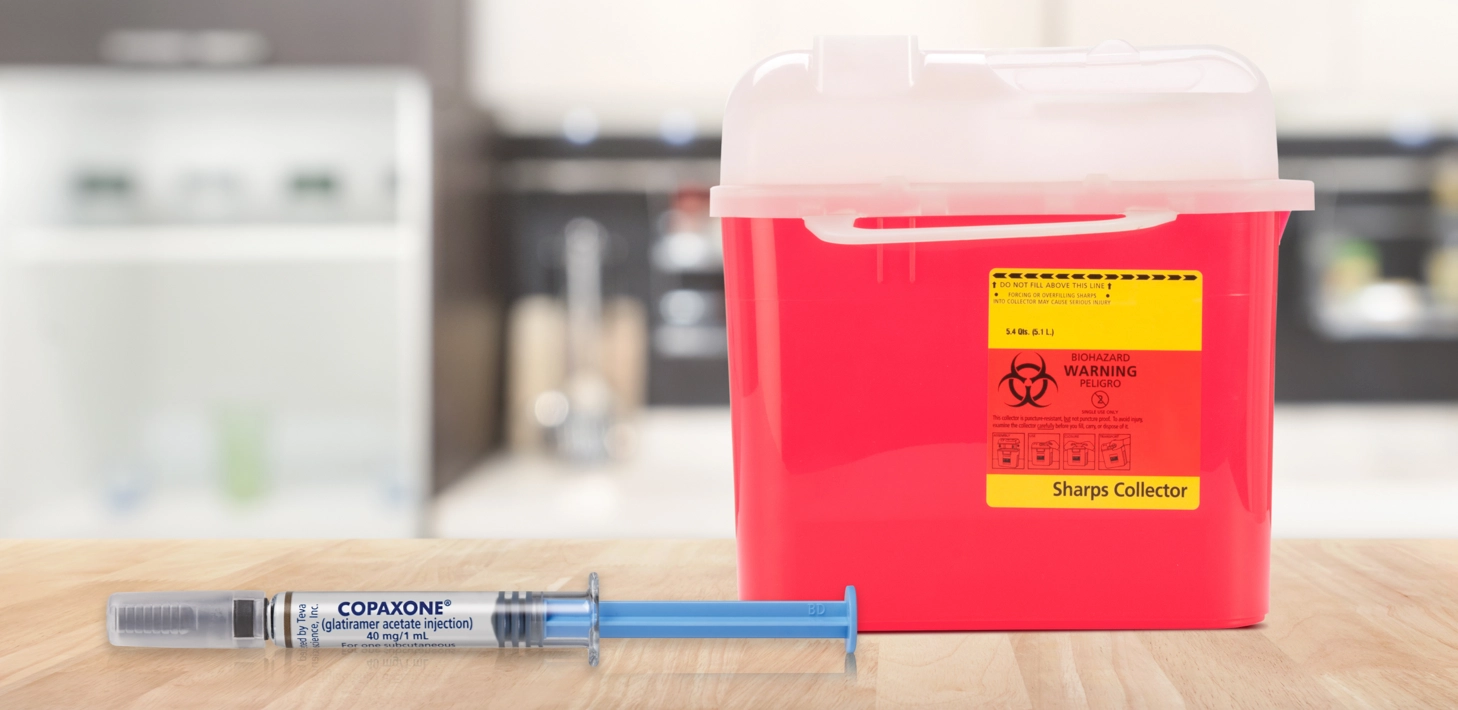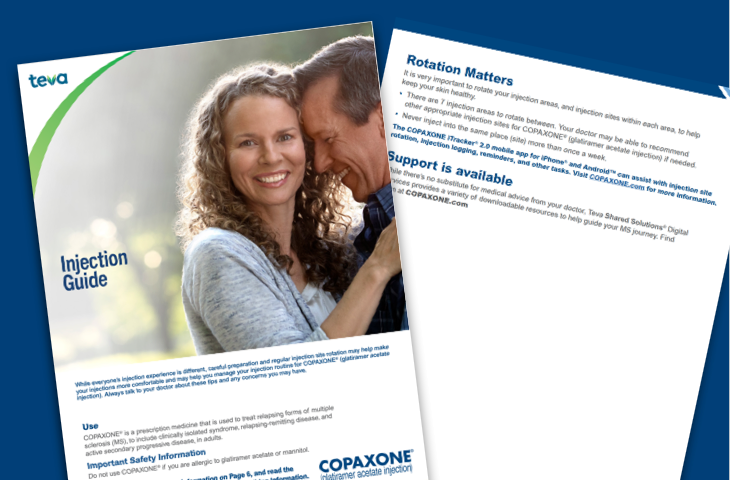INFORMATION ABOUT
INJECTING COPAXONE®
Teva Shared Solutions® Digital Services delivers information you need to know about how to inject COPAXONE® (glatiramer acetate injection) in one place, with tips on storage, disposal, and travel, too.
Watch our COPAXONE® injection video for step-by-step instructions:

How to inject COPAXONE®:
Whether you are starting injections for the first time with your COPAXONE® prescription, or switching to COPAXONE® from another therapy:
- 1
Ready to begin? Take the COPAXONE® prefilled syringe out of the refrigerator at least 20 minutes before you inject.1 Injecting when COPAXONE® is at room temperature can help avoid discomfort.
- 2
Apply a warm compress to the injection site (with a cloth barrier between the warm compress and bare skin) for 5 minutes to help relax the tissue before cleaning the site and injecting.
- 3
Next, follow proper injection technique. See video above or refer to the full Prescribing Information.
- 4
After the injection, use a cold pack (with a cloth barrier between the cold pack and bare skin) on the injection site for up to 1 minute.
While the injection experience is different for everyone, and you should always follow your doctor’s recommendations, rotating injection sites is important to help keep your skin healthy and reduce your risk of injection site reactions.1
HOW LONG CAN COPAXONE® BE LEFT OUT OF THE REFRIGERATOR?1
Keep your supply of COPAXONE® prefilled syringes refrigerated and protected from light when not injecting. The ideal storage temperature is between 36°F and 46°F (2°C-8°C). Avoid leaving your COPAXONE® in a hot or cold car.
When traveling with COPAXONE® or when you are not able to refrigerate, prefilled syringes may be stored at room temperature between 59°F and 86°F (15°C-30°C), for up to 1 month. Discard after 1 month.
What happens if COPAXONE® freezes?1
Never freeze your COPAXONE® prefilled syringes. If they do accidentally freeze, do not use, and dispose of your COPAXONE® in a proper container.
How do I dispose of COPAXONE® Prefilled syringes?1
Remember to properly dispose of used syringes into a hard-walled container immediately after you inject for safe needle disposal. Consider using a needle clip device, available online and at many retail pharmacies, which snaps your used needle off the syringe and houses it in a small device that can hold hundreds of needles before requiring disposal. Check with your local health department, doctor's office, or pharmacist for guidance on how to follow local biohazard regulations for disposing of the needle clip device. Always keep your waste container in an area of your home that is out of the reach of children and pets.

How do I manage traveling with COPAXONE®?
Download the Travel Planning Guide from Teva Shared Solutions® Digital Services to help you prepare for any upcoming travel adventures.
-
Packing COPAXONE® for traveling
Stay prepared for unexpected changes in plans by keeping extra supplies on hand, including syringes, cotton balls, and alcohol wipes, protected in sealed plastic bags. Avoid unnecessary delays by bringing your current prescription label with you; the label should match your name as it appears on your government-issued ID.
-
Flying with COPAXONE®
Keep your COPAXONE® prefilled syringes in your carry-on luggage, so they’re easily available when going through airport security and safely in your possession if your luggage gets lost or damaged. Rest assured, your COPAXONE® should not be affected when passing through X-ray security measures at the airport. For current regulations, contact the Transportation Security Administration.
Reference:
-
COPAXONE® (glatiramer acetate injection) Current Prescribing Information Parsippany, NJ. Teva Neuroscience, Inc.
You are about to leave COPAXONE.com and enter a website operated by a third party.
Would you like to continue?
The information on this site is intended for healthcare professionals in the United States. Are you a healthcare professional in the United States?



